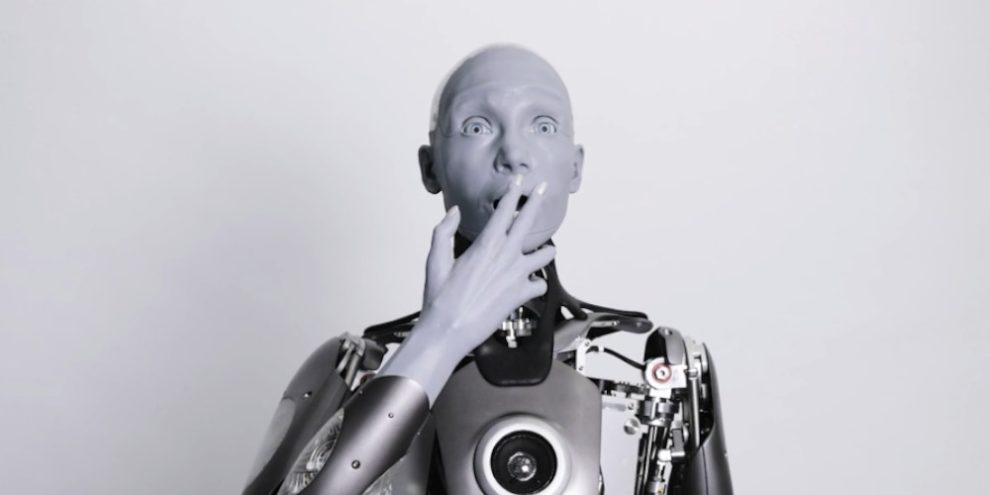
Designed as a platform to host AI, Ameca is a humanoid robot that can make a range of human-like facial expressions.
Created by British company Engineered Arts, Ameca went viral after it was unveiled at the Consumer Electronics Show 2022. "We were incredibly surprised," says Morgan Roe, Engineered Arts' director of operations. "Overnight, it became a sensation. We got 24 million views on one Twitter post."
Ameca uses 17 individual motors and is built from 3D in-house scans of real people which allows it to imitate human bone structure, skin texture, and expressions. Engineered Arts also learned from their last project, Mesmer, that making a robot look a little less lifelike in some regards, by exposing more mechanical parts and colouring it grey, can actually be a positive.
"What we found was, when you try and make it look ultra-lifelike, like our other Mesmer line, it looks a bit more sinister because it's right in the uncanny valley," Roe says. "But when we created Ameca, we pulled it backwards out of the uncanny valley."
Another feature of the robot that sort of sounds slightly scary is that it's designed to be modular, meaning the head can be removed with one click and no tools, allowing it to be swapped for another if something goes wrong.
If Ameca is bringing to mind movies like I Robot and the possible downfall of humanity, don't worry, the company says it won't have anything close to a production model for another 10 years. The robot is also not designed to run, jump, or do any sort of quick movements (it can't even walk yet) like some other robots, so if you ever feel uncomfortable, at least you can just run away from it.
Related Tech News: CES 2022 already off to a running start with these 5 cool gadgets
Finally, it's very important to note that Ameca doesn't actually have any sort of AI built-in (for now). It is simply a series of pre-programmed movements designed to simulate human-like movement. So, as much as it looks like it's gaining sentience when it wakes up, rest assured, it's not.
Also, at least it doesn't have a creepy red light in its head.
Featured image: Engineering Arts via vimeo.com











